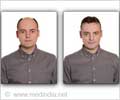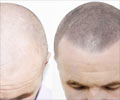The much awaited cure for baldness could be round the corner! Researchers have made a new breakthrough in stem cell treatment that could help baldies grow hair on their scalp.

Xu and his team started with human skin cells called dermal fibroblasts. By adding three genes, they converted those cells into induced pluripotent stem cells (iPSCs), which have the capability to differentiate into any cell types in the body. They then converted the iPS cells into epithelial stem cells, normally found at the bulge of hair follicles.
Starting with procedures other research teams had previously worked out to convert iPSCs into keratinocytes, Xu's team demonstrated that by carefully controlling the timing of the growth factors the cells received, they could force the iPSCs to generate large numbers of epithelial stem cells.
In the Xu study, the team's protocol succeeded in turning over 25 per cent of the iPSCs into epithelial stem cells in 18 days. Those cells were then purified using the proteins they expressed on their surfaces.
Comparison of the gene expression patterns of the human iPSC-derived epithelial stem cells with epithelial stem cells obtained from human hair follicles showed that the team had succeeded in producing the cells they set out to make in the first place.
When they mixed those cells with mouse follicular inductive dermal cells and grafted them onto the skin of immunodeficient mice, they produced functional human epidermis (the outermost layers of skin cells) and follicles structurally similar to human hair follicles.
Advertisement
Source-ANI















